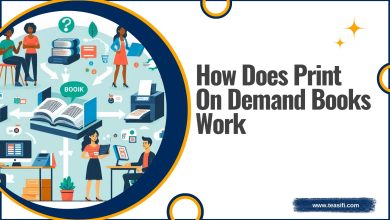Why eCommerce Needs a Different Development Mindset

In the realm of online shopping, your website is far more than a digital storefront—it’s your ultimate engine for driving sales. Unlike traditional websites, an eCommerce platform must do more than look good or load fast. It needs to convert clicks into purchases, retain customers, and constantly adapt to changing buyer behaviour. That’s why eCommerce development requires a completely different mindset — laser-focused on boosting sales. From intuitive UX to real-time analytics and personalized shopping experiences, every decision in the development process should be driven by one goal: maximizing revenue. Global retail eCommerce sales are expected to reach $8.1 trillion by 2026, up from $5.8 trillion in 2023.
Get ready as we explore innovative strategies that can turn your online store into more than just a place to shop—it can become an unforgettable experience.
Understanding the Traditional Development Mindset
The traditional development mindset often hinges on established methodologies like Agile and Waterfall. Each approach has its strengths, but they can lead to rigid processes that may not suit the dynamic nature of eCommerce.
Agile vs. Waterfall Methodologies
Agile and Waterfall frequently take centre stage in discussions about development methodologies.
The waterfall approach follows a linear, sequential process where teams must complete each phase before moving on to the next. It’s like following a recipe—you can’t skip steps or reverse the process once something is already baked in. This can work well for projects with clear requirements but feels rigid in fast-changing environments.
Agile, on the other hand, thrives on adaptability. Many small cycles allow teams to iterate quickly based on user feedback. Think of it as sculpting; each chisel stroke reveals new aspects while allowing adjustments along the way.
For eCommerce, this flexibility becomes essential. The landscape shifts rapidly with trends and consumer demands changing overnight. Being locked into a single path may not only hinder innovation but also affect competitive edge significantly.
Focus on Features vs. Focus on User Experience
When developing eCommerce platforms, it’s easy to get caught up in feature sets. After all, showcasing numerous functionalities can seem impressive. However, this approach often leads to overwhelming users rather than engaging them.
Focus on user experience shifts the spotlight from mere features to how those features serve real needs. It’s about understanding the customers’ journey and ensuring each step is seamless and intuitive.
Consider navigation; cluttering a site with too many options can deter visitors rather than invite them in. Simplifying choices boosts satisfaction and drives conversions.
Prioritizing user experience fosters loyalty as shoppers feel valued. When they enjoy their time on a platform, they’re more likely to return again and again for future purchases. Ultimately, creating an engaging and pleasant shopping environment drives customer retention and strengthens a brand’s reputation.
Adopting a Different Mindset for eCommerce Development
Putting User Experience First
User experience is at the heart of eCommerce success. It’s more than closing a single sale—it’s about crafting an engaging journey that connects with customers. When shoppers feel appreciated and understood, they’re more likely to return.
Creating an intuitive interface is essential, it allows shoppers to move smoothly from exploring products to completing their purchases. A simplified journey minimizes obstacles and helps boost conversion rates.
Personalization plays a significant role as well. Tailoring recommendations based on user behaviour enhances engagement, making shoppers feel understood and catered to.
Loading speed cannot be overlooked either. Slow websites frustrate users and lead them straight into the arms of competitors. Prioritizing quick load times ensures customers stay engaged, boosting satisfaction and loyalty.
Ultimately, putting user experience first helps establish credibility and trust in your brand. Happy customers become advocates, spreading the word through positive reviews and referrals—a vital aspect of growing any eCommerce business.
Personalization & AI Integration Are Game Changers
Modern eCommerce isn’t static. Customers expect websites to remember their preferences, recommend relevant products, and provide a tailored experience.
Developers must now work with:
- AI-based recommendation engines
- User behaviour analytics
- Dynamic pricing models
This demands close collaboration between development, marketing, and data teams—a siloed mindset no longer works.
Embracing Continuous Integration and Testing
Continuous integration (CI) and testing are game changers in eCommerce website development. They allow developers to merge code changes frequently, leading to quicker identification of bugs and issues.
This approach fosters a culture where errors can be caught early, reducing the risk of major setbacks later on. Regular updates keep the site fresh and functional without long downtimes or disruptions.
Automated testing further enhances this process. Teams run automated tests after each change to ensure new features don’t break existing functionality. This reliability is crucial for maintaining customer trust.
Moreover, CI encourages collaboration among team members. Developers can push their code confidently, knowing it will be evaluated through automated systems before going live. It streamlines workflows while enhancing product quality—a win-win for developers and users.
Prioritizing Flexibility and Adaptability
Flexibility and adaptability are essential in eCommerce development. The digital landscape changes rapidly, with new technologies and trends emerging regularly.
A flexible approach allows developers to respond quickly to customer feedback or market shifts. When issues arise, teams can adjust strategies without getting bogged down by rigid processes.
Adapting also involves seamlessly integrating new tools, allowing businesses to remain competitive and deliver a smooth, engaging user experience.
Moreover, an adaptable mindset fosters innovation. Teams encouraged to experiment with different solutions can uncover unique approaches that may enhance performance or increase conversion rates.
Ultimately, flexibility is not just about technology; it’s a culture shift within teams that prioritize agility over stagnation. This mindset empowers organizations to thrive even amidst uncertainty.
Tools and Strategies for an eCommerce Development Mindset
Utilizing Headless Commerce Architecture
For eCommerce businesses, headless architecture decouples the front end from the back end, allowing for greater flexibility in design and functionality. Brands can create unique shopping experiences without being restricted by traditional systems.
With headless commerce, developers have more freedom to innovate. They can use modern frameworks and tools tailored to specific customer needs. This approach enhances performance while enabling faster updates.
In addition, it enables smooth integration with multiple platforms, allowing retailers to easily link their online stores to third-party systems such as CRMs or ERPs. This opens doors to better data management and customer insights.
For brands looking to stand out in a crowded market, headless architecture offers endless possibilities. It empowers teams to respond quickly to trends and preferences without overhauling the entire system.
Leveraging Automation and AI for Streamlined Processes
The evolution of eCommerce demands a new approach to development, one that leverages automation and artificial intelligence. These technologies can significantly streamline processes, improve efficiency, and enhance the customer experience.
Automation tools help manage repetitive tasks with precision. This allows developers to focus on strategic initiatives rather than getting bogged down in mundane work. From inventory management to order fulfilment, automating these processes reduces errors and speeds up response times.
AI enhances this further by analyzing customer behaviour in real-time. It can predict trends, personalize shopping experiences, and deliver valuable insights to guide business decisions. Imagine an online store that learns your habits and suggests products you’ll love based on your past purchases or browsing history.
Integrating AI into marketing strategies optimizes campaigns for better engagement and conversion rates. By utilizing predictive analytics, businesses can tailor their messaging more effectively to meet audience needs at every touchpoint.
Ultimately, adopting these advanced technologies positions e-commerce platforms not just to keep pace but to thrive in today’s dynamic marketplace. Embracing them is essential for any business aiming for sustainable growth while delivering exceptional user experiences.
Ready to build an eCommerce store that’s more than just a website?
As a leading eCommerce platform development company in Chennai, Gem3s blends innovative technology with deep industry expertise to craft digital storefronts that truly drive sales. From intuitive user experiences to AI-powered personalization and robust scalability, we ensure your platform is built to drive revenue and outpace the competition. Don’t settle for the ordinary when your business deserves extraordinary. Let Gem3s transform your eCommerce vision into reality—reach out today and see what’s possible!



